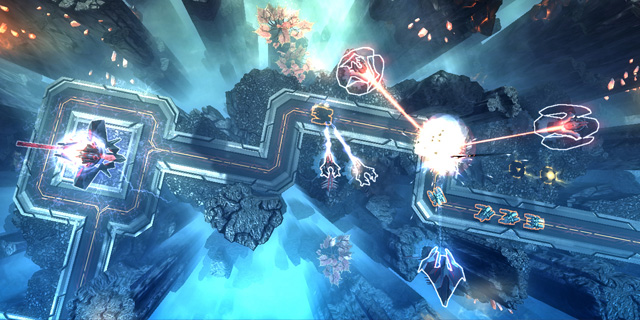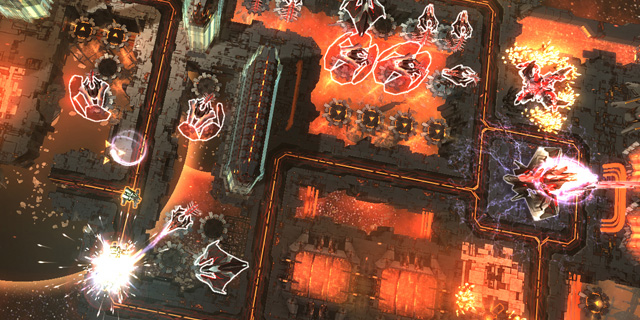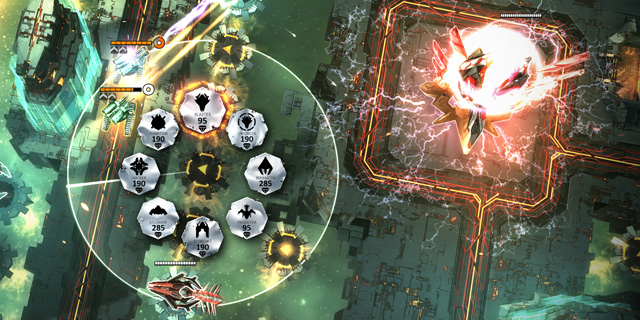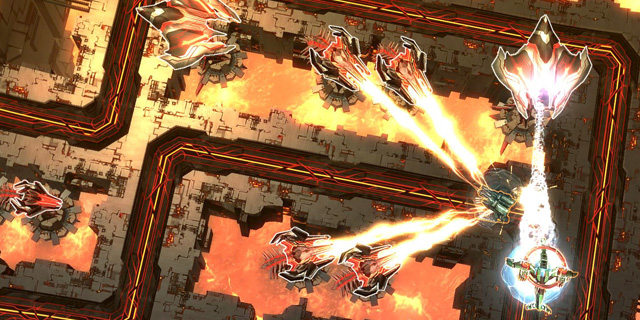
11 bit studios has been steadily releasing tower offense games under the Anomaly banner since 2011. Commanding a line of creeps, determining the best line layout and changing the route to victory on the fly separated Anomaly: Warzone Earth and Anomaly 2 from more standard tower-defense fare. Anomaly Defenders takes the tower offense concept and turns it around again: now you’re controlling the aliens, protecting your launch pads from humans and spending your time on the receiving end of panzer tank fire.
Typical tower defense games are a passive affair, and despite a return to defense, Anomaly Defenders is anything but passive. There are always things to do, and if you neglect them, your towers will fall, your launch pad will take too much damage and the humans will win the war.
Level performance, across three skill levels, yields technology points for use in the tech tree. This is where things really open up. It is up to you to decide what towers you want, how many times they can be upgraded, what skills you’ll have access to, how survivable they are and how much you’ll get back if you change strategies and need to liquidate your defenses. Technology points are refundable, both piecemeal and as a batch, so you can get rid of that last harvester upgrade to unlock a new tower type or wipe the slate clean and start from scratch after a particularly bad loss.

While in previous Anomaly titles you assumed direct control of a military commander and assigned routes to a line of units, here you can shape the enemy’s route by placing attractive buildings in out-of-the-way locations. Typically, when a carusarum field (used to construct and upgrade towers) runs dry, I want to sell the attached harvester and use the refund to build more towers. Now, though, I’m forced to choose, because the humans don’t know the field is dry; they just know that harvesters are an integral part of my defense effort, and they’ll try to shut them down on their way to the launch pad. It’s an interesting mechanic, and it makes up for fixed tower pads and no ability to use cheap towers to shape the enemy’s path.
Killing enemy units yields both carusarum and energy. Energy is used on abilities. Instead of being on internal cool-downs, you have a pool of energy. You can repair as long as you have enough energy to use the ability. This is nice when you’ve got three towers that need healing at the same time. It’s not so nice when you’ve got one that needs a repair when you have no energy to spend.

The same energy is used to erect shields that lessen incoming damage and draw enemy fire or increase a tower’s damage output. The abilities themselves are useful, but what’s more impressive is knowing that they’re optional. If you want to focus on repair and ignore increased damage output, that’s fine: levels can be won that way. And they can be won without buying all of the tower types or the ability to upgrade them. Player choice is huge here; throughout the campaign, I never thought a decision or tower type was forced by the enemies or layout.
The enemy units and towers will be familiar to anyone who has played a previous Anomaly, and that’s awesome. The ramp-up time is lessened; I already know that cover and position matters for towers, that the human units can swap between two configurations on the fly and what towers are good at blasting them to pieces. I’ve seen the other side of this conflict, and knowing the human strategy well makes playing the aliens an easy transition. As soon as I saw them on the tech tree, I knew that I was going to rush to behemoth towers, hide them behind cover and watch as everything unfortunate enough to roll by blew up. Enforcer towers are great artillery, but only if you can keep them away from the humans’ Sledge Hammer snipers. I used to plan routes with great straightaways so that my Sledge Hammers could wreck units before coming into the danger zone, and now I’m countering those same units with clever tower positioning.

Anomaly Defenders has over 20 campaign levels, three difficulty levels with increasing rewards and a great amount of replayability, as unlocked tech is available in earlier levels and the easy technology point refund makes trying new strategies a stress-free operation. As the previous games are, Anomaly Defenders is very pretty. Towers are detailed, upgrades have different aesthetics from base units and hits feel hard thanks to great-looking laser and bullet visuals and sound effects. I wasn’t sure that turning around a turned-around genre would work, but 11 bit studios knows how to keep the tower defense genre fresh in more than one way.
Pros: Active tower defense, positioning that matters, large tech tree with lots of options
Cons: No way to program tower target priority



















